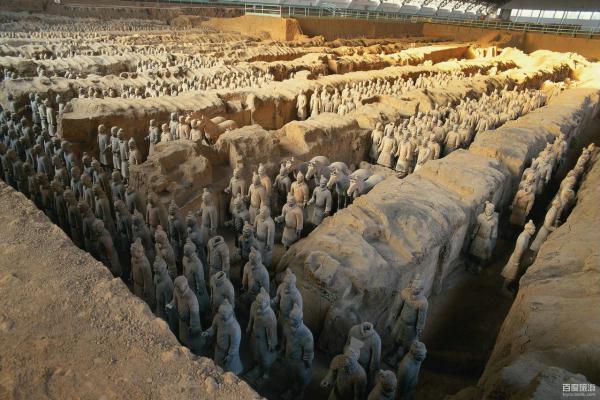Introduction to Terracotta Army

Let’s look at what the Terracotta warriors and horses actually are. The life-sized soldiers, made completely out of clay, were buried in Xi’an, Shaanxi province. The figures, which date back to the 3rd century BC, were discovered in 1974 by local farmers in Lintong District, Xi’an, near the Mausoleum of the First Qin Emperor.
The Terracotta Army is a collection of sculptures depicting the first Emperor of China, Qin Shi Huang’s armies.
It is a form of funerary art which was buried with the emperor in 210-209 BC, around the time in Europe when Greater Greece was being overwhelmed by the Roman army.
The mausoleum’s purpose was to protect the emperor in the afterlife, and make sure he had people to rule over.
The figures vary in height according to their roles, with the tallest being the generals. Other figures include warriors, chariots and horses.
Current estimates are that in the three pits containing the Terracotta Army, there are more than 8,000 soldiers, 130 chariots with 520 horses and 150 cavalry horses, the majority of which are still buried. Other terracotta non-military figures also found in other pits include officials, acrobats, strongmen and musicians.
The Qin Dynasty was the first imperial dynasty of China, lasting from 221 to 206 BC.
The Qin established the approximate boundaries and basic administrative system that all subsequent dynasties were to follow.
Qin’s achievements include standardizing the Chinese writing system and building the Great Wall.
